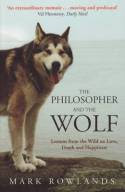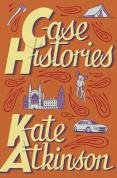 There is something in the dynamic of sitting at a meeting table that induces in me a kind of fugue state, like a bear making his final snoozy pre-hibernation preparations but wearing a suit and a necklace rather than a fur jacket. Where the bear is lucky is that he can roll with his instinct by curling up in a ball and nodding off. If I were to slip from my chair and lie down on the floor underneath the table with my eyes shut, I suspect even the most self-absorbed colleagues might detect my lack of interest.
There is something in the dynamic of sitting at a meeting table that induces in me a kind of fugue state, like a bear making his final snoozy pre-hibernation preparations but wearing a suit and a necklace rather than a fur jacket. Where the bear is lucky is that he can roll with his instinct by curling up in a ball and nodding off. If I were to slip from my chair and lie down on the floor underneath the table with my eyes shut, I suspect even the most self-absorbed colleagues might detect my lack of interest. And so I have devised over the years a small raft of personal meeting survival suits; they're a bit like whole-body life jackets, only invisible rather than orange and with no inflatable pipe to blow into.
Refuge number one is, of course, doodling. Doodles are often thought to be representations of the subconscious mind and, like dreams, involve a kind of picture language. Also like dreams, attempts are often made to place an interpretation on both the content and the placing of the drawing and even the pressure with which it is drawn. My doodles usually start on the left and travel to the right, which apparently means they're related to the workings of the subconscious. Doodles that start on the right and move the other way are more based on logic. There's reams of stuff too about what different doodles mean; research has even shown that doodling significantly helps a person's memory.
Amusingly, though, when thinking about it in the work context, the eighteenth century verb to doodle meant 'to swindle or make a fool of'; the modern meaning emerged in the 1930s either from that or from the earlier verb to dawdle (which since the seventeenth century has had the meaning of wasting time or being lazy).
Colleague: You lazy, time-wasting doodler you; you're making a fool out of me.
Me: No, I'm improving my memory and unlocking the doors to my subconscious.
However, there are times at which doodling can make one feel a little self-conscious - in as much as they give an obvious signal to the rest of the world that drawing intricate swirls, triangles, curls, boxes, anvils and such is far more interesting than listening to what's going on. Which it is, of course, but one has to be more subtle sometimes. When subtlety is called for, my best weapon is to appear to be taking copious notes of the proceedings. Only someone reading it through afterwards would appreciate that I'd been writing something very different indeed. (In fact, my blog post earlier this month about protesters and my walk around central London was written entirely during an afternoon session of 'note taking'.)
If I feel there's the remotest chance that someone might randomly ask me a question, then I'll occasionally resort to writing down some of the interesting (for which read work jargon) phrases that colleagues come out with. A good example of which today was the five minute debate on whether the word flip should be substituted for by move in the records of the previous meeting. Flip, presumably, just seemed too, er, flippant.
If the meeting drags on longer, then I often have to resort to emergency distress flare manoeuvres. Anything but subtle, these can combine any and all of making a cup of tea, dunking biscuits, leaving the room to go to the loo, and, in extremis, manufacturing a non-existent appointment that I simply must leave the meeting for to get to in time.
All of which pursuits are substitutes for either actually falling asleep or telling the chairman that what they're saying is boring, pointless or a waste of time. Or in fact simply politely declining the meeting invitation in the first place. Hmmm... Now there's a revolutionary option...
Picture: This doodle, by the tenor Simon Keenlyside, was auctioned for the 2007 National Doodle Day in aid of Epilepsy Action and the Neurofibromatosis Association.




One of my techniques for moving a meeting along is to "hog" the discussion. Most people who run lengthy meetings do so because they enjoy being in charge and listening to themselves talk. When it turns out that someone else (me) is doing all the talking, a quick adjournment generally is in order. How else can the meeting director demonstrate that he still is in charge?
ReplyDeleteThank you, Katy, for teaching me a bit behind the "art" of doodling, and for some new techniques to displace "meeting fatigue."
Learn to write backwards. (This is easier if you are left handed.) Or, take up a personal form of shorthand. You can then look as if you are taking copious notes but can actually be getting on with something useful - like planning the next chapter in detail!
ReplyDeleteHi Katy :) I recently saw an artist's exhibit that was comprised of only doodles. He created the most fantastic drawings. It was so interesting to me because he had taken simple things such as a grocery list and made them into spectacular pieces of art. I left thinking how fortunate he was to be able to see the world in such an interesting manner. They have proven scientifically that doodling is good for our brains. Some of the most brilliant people in the world are first class doodlers!
ReplyDeleteThis was a fun piece, as always. I love the word pictures you create in my mind :D
Have a Doodley Day! LOL :D!
Yes, very very funny and I can see that'd work Fram! Meetings are quite often really all about the ego of the person running them, I think, so you're quite right there.
ReplyDeleteMy trouble is that I find work so disengaging these days that I tend to mostly only be there in body rather than spirit - generally my mind needs to be in the same room to say anything useful, but I might have to try your idea one day just to see what happens :-)
Oh Cat, I love the idea of writing backwards! I haven't done that since I was in the 6th form and inscribing my everlasting love for a (no doubt) spotty young man on my pencil case :-) Developing a personal form of shorthand could be worth a try too, now you mention it. I generally rely on the illegibility of my handwriting to hide that I'm writing other stuff entirely, but shorthand's an even better disguise!
ReplyDeleteYour exhibition sounds fascinating Kelly. There's no doubt that some doodles come very close to being abstract works of art. Well, not mine necessarily, but some that I've seen :-) I guess if doodling really does tap into another part of our brains, then some really interesting stuff could be thrown up as a result. I think I'd like to see that exhibition very much too.
ReplyDeleteThank you for your very kind words as always, and for visiting - and yes, hope you have a great doodle doodle day too! :-)